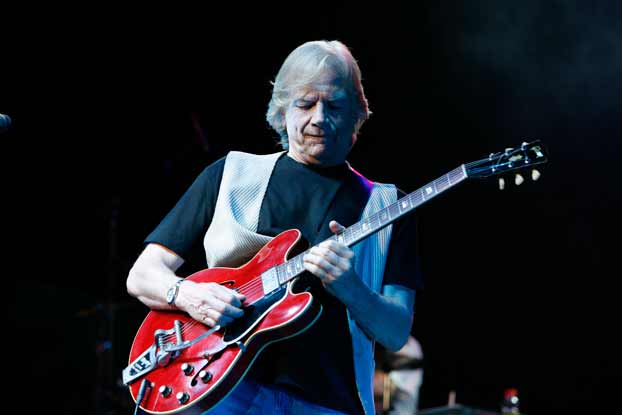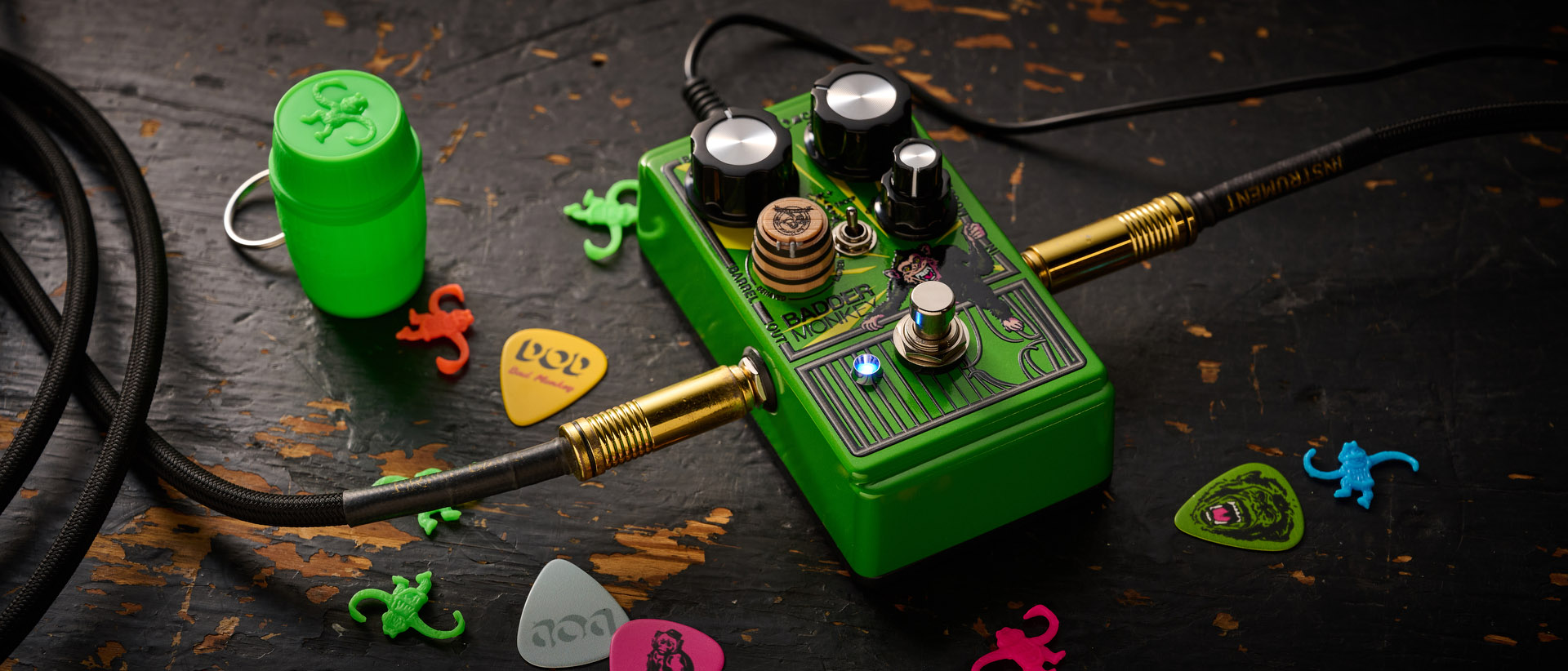The 25 Greatest Classic Moody Blues Songs

Although they don't get nearly enough credit, the Moody Blues were—and are—an incredible band.
They have a string of albums—from 1967's Days of Future Passed to 1972's Seventh Sojourn—that are just as groundbreaking, polished, substantial and powerful as anything released by any other rock band during that time. And we do mean any other rock band.
They had it all, including an ace guitarist named Justin Hayward, who could write—and sing—the most beautiful, heart-crushing melodies, plus a talented bassist, John Lodge, who also wrote and sang some of the band's most memorable songs. Best of all, perhaps, is the fact that every member of the band's classic lineup—Hayward, Lodge, Ray Thomas, Graeme Edge and Mike Pinder—wrote and sang tunes that are now considered vital pieces of the band's classic (1967 to 1972) oeuvre.
The Moody Blues, who are still helmed by Lodge, Edge and Hayward (whose voice, like that of the Monkees' Micky Dolenz and Bad Company's Paul Rodgers, simply laughs in the face of age), are currently hitting the road to celebrate the 50th anniversary of Days of Future Passed. That's the album—recorded with the London Festival Orchestra—that spawned "Tuesday Afternoon" and "Nights in White Satin"—lush, sweet-sounding songs that turned out to be just the tip of the Moodies' innovative, complex and ornate iceberg.
In honor of a great band, we hereby bring you a guide to the 25 (or so) greatest classic Moody Blues songs. By classic, we—once again—mean music released from 1967 through 1972, although we've included vital songs from before and after that dreamy, Mellotron-packed era.
So...are you sitting comfortably?
GO NOW
The Magnificent Moodies | 1965
All the latest guitar news, interviews, lessons, reviews, deals and more, direct to your inbox!
When they started out, the Moody Blues were an R&B band fronted by Denny Laine, who sang the band's first hit, "Go Now." Laine quit the band in 1966, later surfacing as a key member of Paul McCartney and Wings, who performed "Go Now" throughout the Seventies. Bassist Clint Warwick left the Moody Blues around the same time as Laine, leaving Ray Thomas, Graeme Edge and Mike Pinder in search of two new members...
FLY ME HIGH
(single) | 1967
... and along came Justin Hayward and John Lodge. This catchy single was the first release by the band's new lineup; like so many great songs to follow, it was written and sung by Hayward.
NIGHTS IN WHITE SATIN
Days of Future Passed | 1967
"I wrote ... 'Nights in White Satin' when I was 19," Hayward told the Daily Express in 2008. "It was a series of random thoughts and was quite autobiographical. It was a very emotional time as I was at the end of one big love affair and the start of another. A lot of that came out in the song."
TUESDAY AFTERNOON
Days of Future Passed | 1967
"I sat down in a field, smoked a funny African cigarette, and that song just came out," Hayward said. "It was a Tuesday afternoon."
RIDE MY SEE-SAW
In Search of the Lost Chord | 1968
This John Lodge-penned rocker sports a brief but exciting guitar solo by Hayward; it's one of his finest, in fact.
LEGEND OF A MIND
In Search of the Lost Chord | 1968
Here's one by Ray Thomas, the band's flautist, who also contributed a unique voice—not to mention a unique brand of songwriting—to the band. This particular live version accentuates the tune's fun carnival vibe, but the highlight is Thomas' extended flute solo. The song is about counter-culture icon Timothy Leary, who didn't actually die until 1996.
THE ACTOR and VOICES IN THE SKY
In Search of the Lost Chord | 1968
In Search of the Lost Chord is an album built around the loose concept of quests and discoveries. In "The Actor," Hayward tackles lost love; in the brilliant "Voices in the Sky," it's spiritual development.
NEVER COMES THE DAY
On the Threshold of a Dream | 1969
This single was a commercial flop, but it has gone on to be a fan favorite (for sonic reasons that will become apparent when you press the "play" button).
ARE YOU SITTING COMFORTABLY
On the Threshold of a Dream | 1969
Are you sitting comfortably? Let the Moodies cast their spell! During what I keep calling their "classic period," the band's lyrics had a mystical and often very "British" quality. Both are on full display here.
HAVE YOU HEARD, PARTS 1 and 2 (including THE DREAM and VOYAGE)
On the Threshold of a Dream | 1969
Keyboardist Mike Pinder wrote this three-part, album-ending prog-rock masterpiece (Note: The clip below also includes a spoken piece, "The Dream," which was written by drummer Graeme Edge but recited by Pinder). "Have You Heard"—after which this Guitar World story is named—is a major-key gem that segues into the hauntingly beautiful and triumphant "The Voyage" before working its way back to home base. I've always thought "The Voyage" was ever so slightly reminiscent of Ernest Fanelli's early 20th-century "impressionist" compositions.
WATCHING AND WAITING
To Our Children's Children's Children | 1969
"I wrote some things in those years that I never really understood," said Hayward when introducing this beauty during a solo show in 2016. "I'm hoping to understand them by the time this tour is over." The melody is simple yet stunningly beautiful, and the bridge is pretty much perfect. I could probably say that about a lot of these songs.
GYPSY and OUT AND IN
To Our Children's Children's Children | 1969
Much of To Our Children's Children's Children was inspired by the 1969 moon landing, including "Gypsy," a dense and slightly depressing rocker ("Left without a hope of coming home") by Hayward, and Mike Pinder's "Out and In," which features some great Mellotron work (by Pinder) plus another fine guitar line that hides just beneath the vocal track.
QUESTION
A Question of Balance | 1970
“'Nights in White Satin,' 'Question' and 'I Know You’re Out There Somewhere' are songs that the audience brings something to every night," Hayward said last year. "They provide some kind of magic. You can’t expect to evoke a great emotion at a sound check—it’s when you start playing it, and you start feeling the atmosphere in the room of what it means in some peoples’ lives. It’s quite important to them, and they bring an emotional feeling into the room that is just wonderful and very moving. It’s not something you ever get tired of."
IT'S UP TO YOU
A Question of Balance | 1970
There's a faint country/Western edge to this brilliant guitar-centric rocker. Take note of the killer riff and tight harmonies. This tune is just waiting for the right band to come along and cover it; please thank me in the liner notes!
DAWNING IS THE DAY
A Question of Balance | 1970
Note the lush sound of this recording and the way the acoustic guitars sit just atop the crisp drums. While it starts off like the perfect theme song for an afternoon nap, Hayward winds up giving the ol' pipes a workout during the bridge.
THE STORY IN YOUR EYES
Every Good Boy Deserves Favour | 1971
This top-40 single sports another brief but effective guitar solo (Hayward was the Glenn Tilbrook of the early Seventies) and some pretty intense lyrics. The video below features a longer, alternate version of the song FM-radio listeners have come to know and love.
EMILY'S SONG
Every Good Boy Deserves Favour | 1971
Lodge wrote this charming lullaby when his daughter was born; she's got herself one hell of a theme song.
YOU AND ME
Seventh Sojourn | 1972
Talk about your under-appreciated guitar riffs....
I'M JUST THE SINGER (IN A ROCK AND ROLL BAND)
Seventh Sojourn | 1972
Back in the day, it was common to ask rock stars to share their opinions about politics and world events. John Lodge thought that was ridiculous (and he's right, of course). The point of this rocking track is basically, "Why the hell are you asking me? I'm some guy in a rock band."
BLUE GUITAR
Blue Jays (Justin Hayward and John Lodge) | 1975
In 1975, the Moody Blues' Hayward and Lodge released an album of their own, which was cleverly titled Blue Jays (Moody Blues, Justin and John—get it?). The expanded 1987 and 2004 versions of the album feature "Blue Guitar," which was released as a non-album single by the duo that same year. Not surprisingly, it's a beautiful song with a killer guitar sound. Perhaps a YouTube commenter put it best: "This song is a treasure discovered only by those who know the value of it." Blue Jays is so good that Moody Blues fans often put it in the same category as the band's "core seven" albums (even though Hayward and Lodge are the only two Moodies to appear on it). Other great Blue Jays tunes include "This Morning," "My Brother" and "Remember Me (My Friend)."
THE DAY WE MEET AGAIN
Octave | 1978
Nothing to see here, folks—just another oustanding melody and guitar solo by Hayward. Octave was the last Moody Blues album to feature the classic lineup—not to mention hints of their dreamy early Seventies sound. Pinder left the band immediately after the sessions and was replaced by keyboardist Patrick Moraz (formerly of Yes), who can be heard on all the songs below. Octave also marks the final Moody Blues album to be produced by Tony Clarke, who also produced Blue Jays. Clarke died in 2010.
THE VOICE
Long Distance Voyager | 1981
SITTING AT THE WHEEL and BLUE WORLD
The Present | 1983
THE OTHER SIDE OF LIFE
The Other Side of Life | 1986
I KNOW YOU'RE OUT THERE SOMEWHERE
Sur La Mer | 1988
I've gone a bit more mainstream with these five choices to show how relevant the Moody Blues were in the Eighties. They were one of just a handful of Sixties bands—including the Kinks, the Rolling Stones and the Who—to have actual hits in the shiny, empty, Miami Vice-loving, horrible-drum-sound MTV era (although, unlike at least two of those other bands, the Moodies were able to maintain their success throughout the entire decade).
Success followed them into the early Nineties ("Say It with Love"), an era that spawned their impressive live album, A Night at Red Rocks with the Colorado Symphony Orchestra. They released their final (non-holiday) studio album, Strange Times, in 1999. In 2017, the Moody Blues exist as a popular touring band.
Unlike the case of so many other important Sixties bands, every member of the classic lineup of the Moody Blues—Edge, Pinder, Thomas, Lodge and Hayward—is still with us. It makes you wish they'd write a few songs, book time at Toe Rag Studios in London (which is known for its spot-on vintage sound and Sixties-era recording equipment) and make a new studio album with an intentionally late-Sixties/early Seventies sound.
It would be an event. Please consider it, Moodies!
Follow Damian Fanelli on Twitter and/or Instagram.

Damian is Editor-in-Chief of Guitar World magazine. In past lives, he was GW’s managing editor and online managing editor. He's written liner notes for major-label releases, including Stevie Ray Vaughan's 'The Complete Epic Recordings Collection' (Sony Legacy) and has interviewed everyone from Yngwie Malmsteen to Kevin Bacon (with a few memorable Eric Clapton chats thrown into the mix). Damian, a former member of Brooklyn's The Gas House Gorillas, was the sole guitarist in Mister Neutron, a trio that toured the U.S. and released three albums. He now plays in two NYC-area bands.
